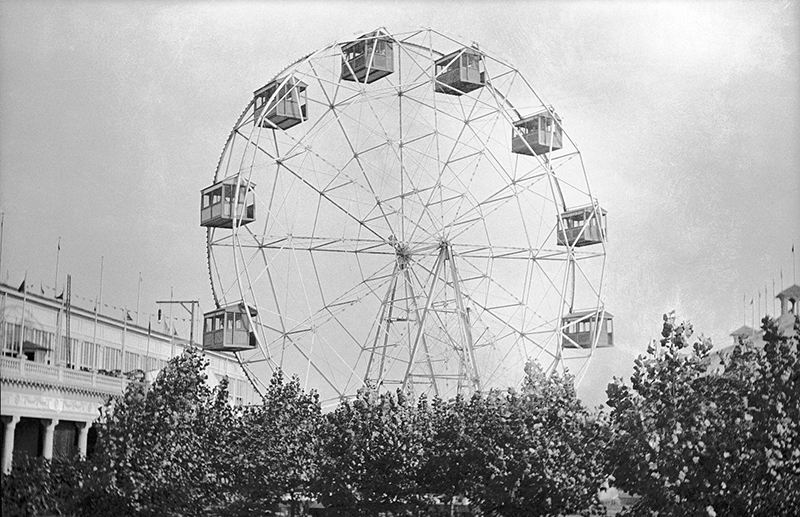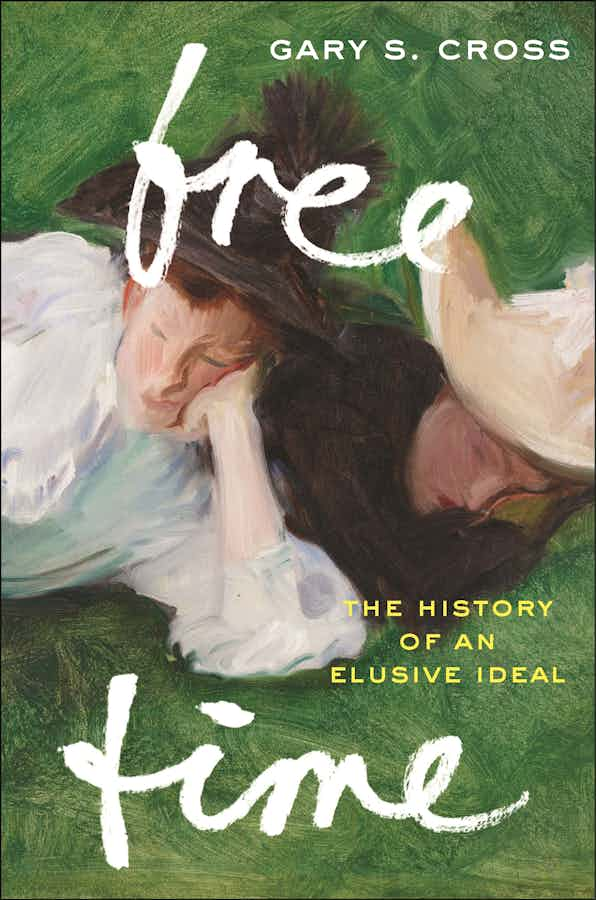Spending My Free Time Researching Free Time

Ferris Wheel, Coney Island, by Eugene Wemlinger, 1910. Brooklyn Museum/Brooklyn Public Library, Brooklyn Collection.
My new book, Free Time: The History of an Elusive Ideal, marks the third time I’ve explored the history of time and consumption at length. My choice to continue dipping into this subject and exploring new angles and theses suggests just how rich a single corner of modern history can be. This project allowed me to develop new ideas and sources, return to culturally neglected issues, and even to have “conversations” with my younger scholarly selves as I continue to question how worktime and free time in the present has changed, and remained the same, since 1900.
I started researching free time from the perspective of a labor historian interested in the struggle for reduced worktime, especially from 1900 when Americans toiled about 60 hours a week. My 1993 book Time and Money: The Making of a Consumer Culture inaugurated my long engagement with this theme. I argued in part, that in the past 80 years or so consumption has replaced an earlier quest for free time and led to a rejection of the once common expectation that consumers and workers would demand more time free from work as consumer needs were met. Since that book, I’ve focused on the history of the “victorious” modern consumer culture as worktime has scarcely changed since the 1938 Fair Labor Standards Act established the 40-hour week norm. Although I never abandoned my interest in worktime and labor politics (and returned to it in my new book), my research turned more directly toward free time and how it was shaped by consumer culture.
Consumer culture has been the target of critiques since its modern origins at the beginning of the twentieth century, often influenced by what Thorstein Veblen wrote in his 1899 book The Theory of the Leisure Class: “Conspicuous consumption of valuable goods is a means of reputability to the gentleman of leisure.” I still found that culture to be a valuable lens through which to understand how consumer goods and culture affected 20th century American society. Shaped by my teaching courses in the history of family and technology, I looked at the historical transformations of parenting and childhood, masculine and teenage identities, amusement parks and freak shows, popular culture, and nostalgia—all emerging historical topics—through the impact of consumer culture. And thanks to a university that gave me a lot of “free time,” I was able to devote much time to this project. Over these years, I expanded from my earlier documentary research to the study of consumer objects like teddy bears and Barbie dolls, ads for cars and on the Superbowl, Andy Hardy and Rambo movies, TV and radio sitcoms, and oral interviews with collectors of old cars and dolls.
Approaching historical study from the consumerist angle led me to challenge older understandings of this phenomenon held by scholars and myself. In my 2000 book All-Consuming Century, I modified my earlier acceptance of social emulation — “keeping up with the Jones” with its pejorative implications — as an explanation of modern consumerism. Instead, I argued that through “superficial” consumption people met their need to display their personal identities and distinctions while also participating in consumer “communities,” especially in a mobile American society, such as when young immigrants in 1900 adopted the latest in American fashion. But the more I kept digging into this subject, the more I felt like I needed to tweak my understanding of how and why Americans consume. I with Robert Proctor challenged my earlier “social” interpretation of consumption in our 2014 book Packaged Pleasures. We explored how products and services that emerged around 1900, such as Coke and cinema, packaged, personalized, and labeled taste, sight, hearing, and other forms of sensuality, thereby creating demand for new goods and commercial experiences.
After thirty years, I still find value in a fresh look at that initial question about consumption and free time. The more I learned about the subject, the more I realized that much more than material acquisition and succumbing to advertising or Veblenesque emulation drives American consumption. I drew on the term “fast capitalism,” which appeared briefly in the late 1980s, to explain the recent decline of the relatively stable system of assembly line-driven mass production made possible by an organized workforce popularized by the Ford Motor Company. It was replaced with an economy of continuous innovation and the displacement of a formerly relatively secure American working class with a globalized unstable workforce. In Free Time I argue that this acceleration of capitalism came much earlier — around 1900 — in a fast consumer economy that featured rapid turnover, easier access, and often increased sensual intensity. We see this beginning with cars, Mary Pickford movies, Tin Pan Alley recordings, and even amusement park novelties like roller coasters and “The Trip to the Moon” attraction. The modern disdain for time not infused with “fast consumption,” and instead devoted to personal cultivation and social engagement, has reduced interest in more free time, increased the need for worktime for the wherewithal to consume, and reinforced devotion to the work ethic.
I then turned to how, not just what, modern Americans experienced in consumption and how this affected their understanding of free time. During my Free Time research, I became fascinated with how culture is increasingly experienced in a funnel. Experiencing culture as a personal encounter with an expanding world of goods and media began perhaps most notably with the home phonograph around 1900, and has culminated today in the cell phone. This funnel provides immediate access to information and sensuality through the recording and the electronic signal on the screen. But, critically, it does so without much physical mediation of others, allowing American individualistic biases to reign. Cultural reformers have long proposed that free time be used in self-development and social — and broadly worldwide — engagement. In its way, this is what funneled consumer capitalism provides: personal choice and “worldly” exposure. However, the funneled experience often fails to reach the ideals of these reformers and cultural critics. In part, this is because it is too “fast” for integral personal fulfillment, but also because it has replaced the real with the virtual experience, resulting in or exacerbating loneliness. This failure, at least to many cultural critics, explains some of the frustration with the modern reality of “free time.” Who hasn’t regretted all the time spent watching TV or at the cell phone instead of spending more time developing a hobby or cultivating friendship? The problem is not just lack of free time but disappointment with what we have.
After finishing Free Time, I found that there remains much room for other possibilities for exploring the concepts of the fast and funneled. Over the past year, I have been thinking of how these processes have shaped some very modern ways of experiencing excitement, hits of meaning, and even ecstasy. In Free Time, I outline how elements of the traditional festival survived in commercialized carnival culture, as in amusement parks. However, I don’t really explore the link between the eventual decay of the festival as previously understood and the emergence of fast and funneled consumer capitalism. And that has struck me as a great theme to develop for my next book, which will continue my long examination of consumer culture in both its continually shifting and ever stable facets. This time, I hope to chart the decline of the festival and the rise of the commercial fad. Exploring the contrast between the festival and the fad can tell us a lot about our modern selves, and our past selves. And that has been my primary goal as a historian in conversation with these selves, both society’s and my own.
